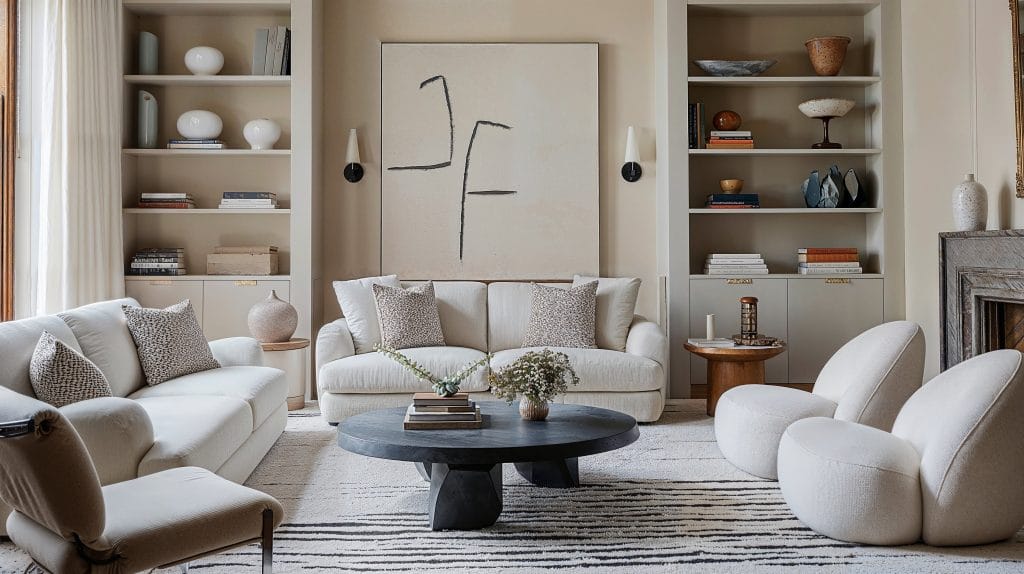Best-rated interior design firms create stunning spaces.
Change Your Home With Vital Concepts of Inside Layout and Aesthetics
The art of changing your home via the important concepts of interior decoration and visual appeal calls for a thoughtful approach that integrates color, balance, and spatial understanding. By comprehending the effect of color theory and the importance of texture and patterns, one can develop spaces that are not only visually enticing yet also deeply personal. Achieving this equilibrium entails even more than plain design; it incorporates a strategic setup and an eager understanding of exactly how each element interacts within a room. As we discover these fundamental ideas, consider just how they could redefine your understanding of home and personal expression.
Comprehending Color Concept
Recognizing the principles of color concept permits developers to create areas that reverberate emotionally with owners while fulfilling practical needs. Each category plays a vital function in developing harmony within an area.
The emotional impact of colors is profound; warm hues such as reds and oranges stimulate power and heat, while awesome tones like blues and eco-friendlies advertise peace and peace. The use of complementary colors improves aesthetic passion, producing striking contrasts that can boost an area's appeal.
Neutral shades, on the various other hand, offer as a versatile backdrop, allowing other design aspects to radiate. It is crucial to consider factors such as lighting and the area's objective when choosing a color palette, as these can alter the perception of colors throughout the day.
Inevitably, a well-considered shade plan can transform a space, fostering a feeling of convenience and design that lines up with the residents' choices. Proficiency of color theory is, as a result, a vital skill for any kind of indoor designer aiming to develop harmonious and inviting settings.
Attaining Balance in Design
Exactly how can designers attain a sense of balance in their spaces? Achieving balance in layout is fundamental to developing harmonious insides.
Asymmetrical balance, on the other hand, depends on differing aspects that still attain a cohesive appearance. This approach allows for more dynamic and informal setups, providing passion while preserving equilibrium. By very carefully selecting varying dimensions, shades, and appearances, designers can produce an aesthetically engaging space that really feels well balanced yet energised.
Radial balance highlights a main focal point with aspects emitting outward. This style is generally seen in round formats, where furnishings and style develop a natural surround that draws the eye inward.
Eventually, accomplishing equilibrium needs thoughtful consideration of scale, percentage, and the connections in between components. luxury interior design. By skillfully applying these balance principles, designers can transform areas right into settings that feel both visually pleasing and functionally unified, improving the general experience for owners
Significance of Spatial Recognition

An eager feeling of spatial recognition allows designers to identify focal points within a space, assisting the visitor's focus to vital functions while maintaining an overall sense of unity. It also aids in the tactical placement of lighting, which can substantially affect the assumption of room and state of mind. In addition, recognizing spatial partnerships allows the developer to accommodate the certain requirements of residents, guaranteeing that each area offers its desired objective without endangering visual appeals.
Ultimately, spatial recognition is vital Check Out Your URL for making best use of the possibility of any type of indoor room. By thoroughly considering the interaction between measurements, design, and feature, developers can create settings that not only fulfill functional requirements yet likewise stimulate a sense of convenience and charm, boosting the general living experience.
Integrating Appearance and Patterns
Accepting a varied series of structures and patterns can dramatically boost the visual and tactile appeal of an indoor room. The tactical use various products-- such as wood, metal, textile, and rock-- produces deepness and rate of interest, making a room really feel more inviting and vibrant. For example, integrating smooth surface areas with harsh structures can develop a balance that draws the eye and involves the detects.
When integrating patterns, think about both range and repetition. Big patterns can function as prime focus, while smaller, subtle layouts can enhance other elements without overwhelming the room. Layering patterns, such as pairing flower cushions with striped throws, adds complexity and a feeling of consistency if implemented thoughtfully.
It is additionally crucial to keep a cohesive shade scheme, making certain that appearances and patterns interact rather than contend for attention. By selecting a couple of vital textures and patterns, you can create click to investigate an unified visual that mirrors your personal style while boosting the overall ambiance of the area. Eventually, the cautious incorporation of these components can change a mundane room right into an advanced environment abundant with character and warmth.
Individualizing Your Area
Creating an area that shows your individuality is important to achieving an absolutely inviting environment. Customization in interior decoration permits you to infuse your one-of-a-kind style and rate of interests right into your home, transforming it from a Learn More Here plain shelter right into a haven that speaks with who you are. Begin by selecting a shade combination that reverberates with your emotions-- vibrant shades can invigorate, while soft tones use tranquility.
Include artwork and decoration that reflect your interests, whether it be travel, nature, or abstract ideas. Showing personal collections, such as publications, photos, or keepsakes, can evoke valued memories and produce focal points within a space. Additionally, think about customizing practical items, like upholstered furniture, to line up with your aesthetic choices.

Conclusion
Finally, the transformation of a home through the necessary concepts of interior design and looks requires a detailed understanding of color concept, balance, spatial understanding, texture, and customization. Each aspect adds substantially to creating an unified and functional living environment - luxury interior design. By thoughtfully incorporating these principles, people can boost the visual appeal and emotional resonance of their areas, eventually cultivating a home that mirrors unique identifications while offering convenience and practicality